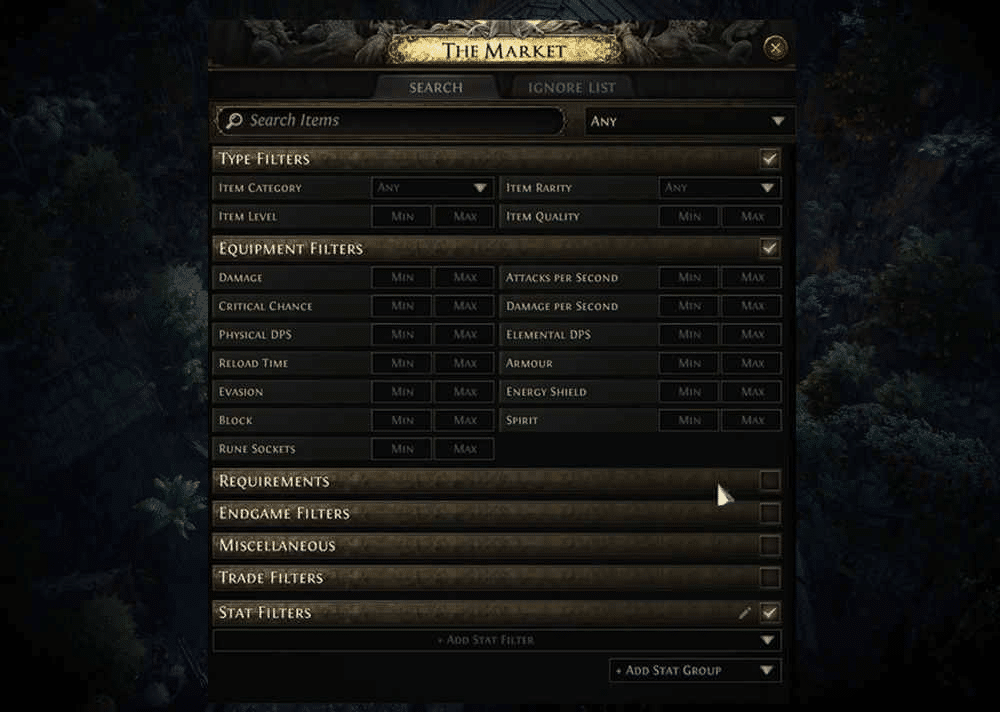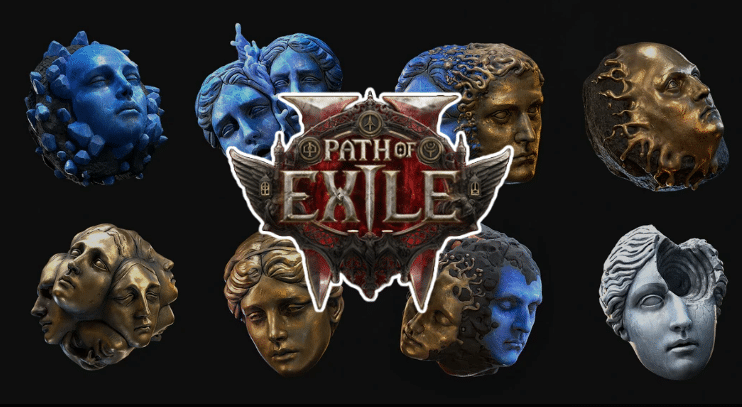The Path of Exile 2 (PoE 2) economy is evolving fast and Divine Orbs are at the center of it all. As one of the most sought-after items in the game, their price can shift dramatically depending on patch changes, league resets, and trading volume. In fact, after the 2025 beta updates, PoE 2 saw a 25% fluctuation in Divine Orb values across regions.
If you’ve been wondering which site has the most reliable Path of Exile 2 Divine Orb prices right now, you’re not alone. Many players, myself included, have struggled to find consistent pricing and safe trade environments. After trying a few popular marketplaces, I found that some lacked transparent pricing, while others made you wait days for delivery. That’s when I turned to trusted platforms offering secure escrow systems, GamerProtect, and after-sales support — the difference was night and day.
If you’re looking to buy safely and efficiently, poe 2 currency options on reputable platforms can help you get what you need at real market value without risking your account or items.
Understanding Divine Orbs and Their Role in PoE 2’s Economy

Divine Orbs have quietly become the backbone of Path of Exile 2’s economy. These orbs let players reroll the numeric values of modifiers on their gear — for example, turning a mediocre “+52 to maximum life” into a near-perfect “+74.” It might sound minor, but those few extra points can mean the difference between an average build and one that melts bosses.
In PoE 2, the entire crafting landscape has shifted toward precision. Instead of endlessly adding random mods like players did with Exalted Orbs in PoE 1, the new system emphasizes fine-tuning existing affixes. That shift made Divine Orbs indispensable, especially for endgame optimization and high-value trading. While Exalted Orbs still exist for adding modifiers, Divines have surpassed them in importance because they’re used far more often for upgrading late-game gear.
What’s fascinating is how Divines became the unofficial standard for pricing. When someone lists an item for “3 Divines,” every experienced player instantly understands its tier and value. They strike the right balance — rare enough to hold value, but still obtainable through regular gameplay, particularly in endgame mapping or boss drops.
That said, their role isn’t universal. Early-game or casual players won’t interact much with them; their importance really shines in high-end crafting. Regional markets also shape their value slightly — European servers tend to have steadier prices due to higher trading volumes, while Asian servers often experience sharper peaks and dips. Still, across all servers, Divine Orbs remain one of the clearest indicators of economic health in PoE 2’s trade ecosystem.
Why Divine Orb Prices Fluctuate So Frequently

If you’ve followed Divine prices across a few leagues, you’ve probably noticed they move like a stock chart. Their volatility comes down to how Path of Exile 2’s economy reacts to constant change. Each new league or patch tweaks drop rates, adds new content, or alters how crafting works — and every one of those shifts ripples through the market.
When GGG introduces a league mechanic that makes Divines drop more easily, the price can tumble overnight as supply floods the market. On the other hand, when crafting systems emphasize rerolling or when new uniques appear that benefit from perfect stat lines, demand skyrockets, and prices follow. Early in a league, Divines often sell at eye-watering rates because everyone’s trying to craft or trade their way ahead. As supply increases, prices stabilize — usually around weeks three or four — before gradually dipping toward the end.
It’s also worth noting that different regions behave differently. North American markets tend to be more stable thanks to steady trading habits, while Asian markets often swing more drastically because of population spikes at certain times of day. Still, no matter the region, the same trend repeats: Divines rise sharply at the start, flatten in the middle, and settle late in the league.
Marketplaces and direct trades also play their part. Trading directly with another player might save you a small margin, but it exposes you to risk — scams, misclicks, or misunderstandings. Marketplaces, by comparison, charge a slight premium but offer structured safety nets, verified sellers, and better pricing transparency.
Which Site Has the Most Reliable PoE 2 Divine Orb Prices? — My Experience
I’ve tried several sites over the past few leagues, and not all of them lived up to the hype. One offered prices that seemed too good to be true — and they were. The “30-minute delivery” promise turned into a half-day wait, and support barely responded. Another looked legitimate but didn’t update listings fast enough; I ended up overpaying because the market had already shifted. The third site had a clean interface but no seller verification, which meant manually checking every profile just to feel safe.
After enough frustration, I realized that cheap currency means nothing if the process is unreliable. When you’re trading something as valuable as Divine Orbs, what you really need is speed, consistency, and transparency. Sites with real-time tracking and active moderation save hours of wasted time. They let you focus on your build — not on chasing down a seller who disappeared after payment.
Why Is It Important to buy Divine Orbs on Reliable Platforms
There’s a darker side to third-party trading that a lot of players learn the hard way. Buying from shady or unverified sellers might look like a bargain, but GGG’s anti-fraud systems can flag suspicious transactions. Players have reported temporary bans after unknowingly purchasing botted currency. It’s rare, but it happens — and resolving it can take weeks.
That’s why using verified platforms is worth it. Trusted marketplaces vet their sellers, track delivery, and use secure transaction methods. Platforms like G2G include GamerProtect, an escrow-based system that holds your payment until the seller delivers exactly what you paid for. It’s simple: if the order goes wrong, you get your money back. Add in 14-day insurance and responsive support, and you eliminate most of the stress that comes with peer-to-peer trades.
Fast delivery is another underrated factor. Most legitimate sellers on these platforms fulfill orders in under 30 minutes, which makes a huge difference when you’re trying to upgrade before a big league push. Checking seller stats helps too — profiles with hundreds of completed trades and a 98%+ rating are usually safe bets.
The takeaway is straightforward: don’t let impatience or small discounts push you toward risky trades. Divine Orbs are valuable, and trading them deserves the same caution you’d use with any high-value asset. Reliable platforms protect both your time and your account — which, in PoE 2’s volatile economy, might be the smartest investment you can make.
Step-by-Step Guide — How to Buy PoE 2 Currency Safely in 2025
Okay, let me walk you through exactly how I buy Divine Orbs now, step by step, based on everything I learned from my mistakes. This process works whether you’re buying Divines, Chaos Orbs, or any other poe 2 currency, and it’s designed to minimize risk while maximizing efficiency.
Step 1: Search and filter for your currency. Use filters for your league (Softcore/Hardcore), server region, and sort by seller rating or delivery time. Pay attention to bulk discounts—buying 10 Divines at once saved me about 8% compared to individual purchases.
Step 2: Vet the seller thoroughly. Check three things: total completed orders (1,000+ preferred), feedback rating (98%+ minimum), and recent reviews. Don’t just look at the percentage—read actual review comments to see if delivery times are accurate and if there were any issues.
Step 3: Purchase using escrow-protected payment. Only use payment methods covered by the platform’s buyer protection. Double-check your in-game character name and league before finalizing—I once wasted 30 minutes because of a typo.
Step 4: Verify in-game before accepting. When the seller whispers to you, meet them in Act 1 town or your hideout. Count the currency in the trade window BEFORE accepting. If you ordered 10 Divines, make sure there are exactly 10. Don’t rush—scammers count on you accepting quickly.
Step 5: Confirm delivery and use after-sales support if needed. Once the trade is complete, confirm through the platform’s order page. If anything goes wrong, contact support immediately with screenshots and chat logs. I once got shorted 2 Divines and was refunded within 24 hours because I had evidence.
Quick safety tips: Avoid prices 20%+ below market average (usually scams or botted currency). New seller accounts with few transactions are red flags. Never complete transactions outside the platform’s system. Trust your gut—if something feels off, walk away. There are plenty of legitimate sellers out there.
2026 Divine Orb Price Predictions

Based on trends from 2025 and the latest data from Path of Exile 2 (PoE 2), you should expect continued volatility in the Divine Orb market. The crafting and end-game systems are shifting, and that means prices will continue to swing.
The developer, Grinding Gear Games (GGG), has rolled out the 0.3 “The Third Edict” patch which brings a major overhaul to crafting, including new tiers of currency, guaranteed higher tier mods, and changed drop mechanics.
Because of these changes, Divine Orbs are becoming more of a crafting staple for end-game players who want to fine-tune their gear.
Demand Drivers
- The expanded Atlas progression and the new crafting systems mean that items which were once “good enough” now frequently require multiple Divine Orbs to reroll numeric values of explicit modifiers to reach the optimal range. This boosts baseline demand significantly.
- The rarity of Divine Orbs remains relatively high because natural drop rates are low and the demand is rising. This creates upward price pressure.
- Balance patches will continue to create discrete market shifts. When a damage type is buffed or mod ranges increase, players rush to reroll gear, which historically has caused price spikes in similar systems. Because PoE 2 has moved to more frequent updates, these mini-spikes are more common.
Price Forecasts by Region
- While official public exchange rates aren’t published per region, player market data suggests regional pricing diverges based on server populations and trading volume.
- For 2026: In North America (NA) servers you might expect a typical Divine Orb trade price in the range of ~180-200 Chaos Orbs equivalent (or a similar base metric) during stable periods.
- In European (EU) servers, trades may run around 190-210 Chaos equivalent, given higher competition for high-end crafting resources.
- In Asia-Pacific servers, during peak hours and high demand (especially when meta shifts drop), Divine Orb equivalents may spike to 250+ Chaos or more.
Note: These are hypothetical ballparks based on community trends; always check live market data.
League Lifecycle & Price Behavior
- In mid-2026, assuming there are no major economy-disrupting patches, you might see stabilization with Divine Orbs trading in a range closer to 175-190 Chaos equivalent. But that stability is fragile given the high update cadence.
- Late-league price drops will likely be smaller than what many players remember from PoE 1. Because the Standard league (or equivalent end-league ladder) remains relevant in PoE 2, ongoing demand for Divine Orbs stays steady. Expect 10-15% price dips instead of 30-40%.
- At league starts, expect major volatility: prices will often drop in the last week of the previous league (as players liquidate assets), then explode on day one of the new league as everyone starts competing for early gear optimisation.
Update-Driven Mini-Spikes
- Each major content update (new unique items, new crafting mechanics, end-game systems) tends to create a “mini-spike” in Divine Orb demand. Historically, these spikes boost prices by 10-15% for short periods.
- Being aware of patch notes is useful: when GGG introduces a mechanic that makes Divine rerolls more valuable (for example by raising mod ceilings or introducing new loot tiers), that’s your cue to either buy ahead or wait for the spike to pass.
Strategic Take-aways
- 2026 will remain volatile. Use market-watch tools and community trade data to time your purchases or sales.
- If you’re buying Divine Orbs (or trading for them), aim for dip windows (e.g., late-league discounts, pre–league-start sell-offs).
- If you’re crafting, hold your Divine Orbs until you’re confident the meta is stable or you’re ready to invest in high-risk high-reward rerolls.
- Live marketplace data (from trade APIs or community aggregators) is essential for making informed decisions. Transparency reduces your risk of overpaying.
